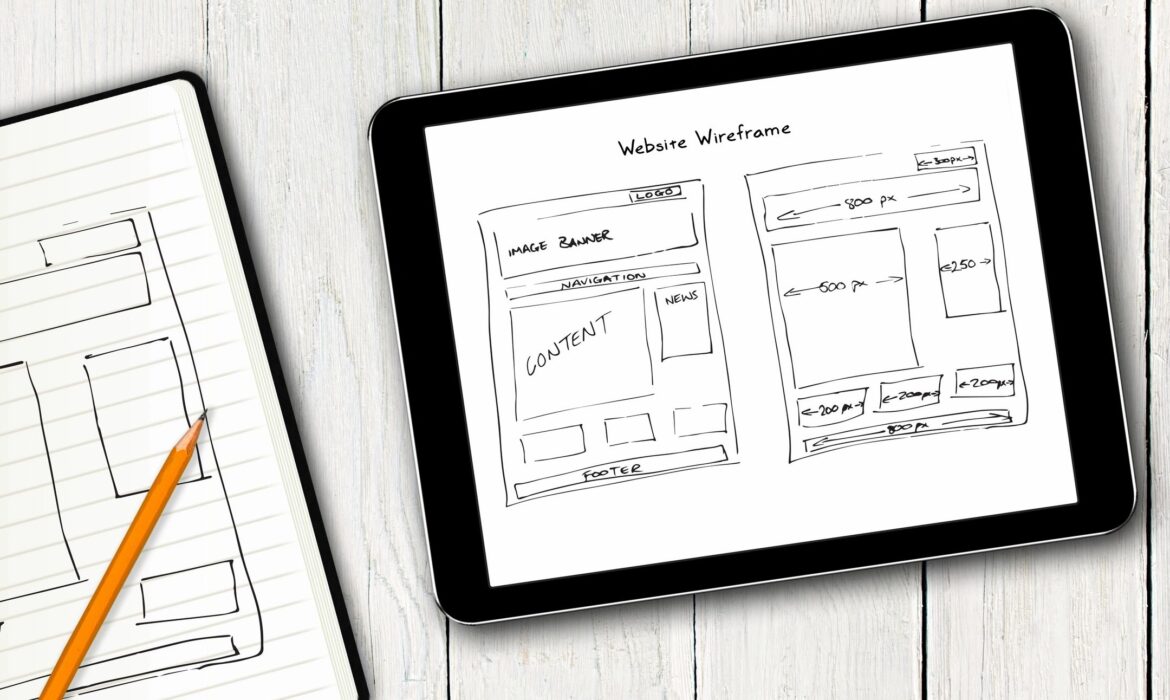Your website is the digital face of your business and has a significant impact on your overall brand identity. It must inform, engage and convert your target market. If just one of those elements is missing or below par, you could be missing out on business.
In this ultimate guide to B2B web design, you’ll learn how to design or redesign your site so that it delivers on all the essentials of a high-performing B2B website:
- Style and tone
- Relevance
- Speed
- Accuracy
- Branding
- Conversion rate
Increasing conversion rate is the ultimate goal of any website and should be at the forefront of your mind at every stage of the design process. The key is to put yourself in your users’ shoes and consider what they want from your site. Creating something that you love is all well and good, but if it fails to appeal to your target market, it is a pointless exercise.
The Basics of B2B Web Design
Web design is about making sure you stand out from the crowd, enhance your image and make sales. That means combining SEO (search engine optimization) with practicality.
Research carried out by Google showed that 89% of B2B buyers use the internet during the research phase of their buying process. And the CMO Council says 90% of B2B sales are influenced by online content. So, part of the design process involves optimising your site for SEO.
SEO is a huge topic in its own right and we won’t go into the specifics here, suffice to say that Google uses crawler bots to search, index, and rank web pages in order to display the most relevant pages to its users. These bots attempt to replicate real-life users when scanning your B2B content so by getting your web design right you should already be on the right track.
But that’s only half the battle. Once users arrive at your site, it needs to engage them pretty damn quick. Studies show that your site has around 15 seconds to convince them that it can provide the solution to their search request. To do that your web design should focus on:
- Loading speed
- Customer experience (CX)
- Being mobile-friendly
- Look and feel of the site
- Users’ pain points
- Clearly defining the features and benefits of your product or service
- Obvious CTAs that guide users through your site
Getting all of that across in 15 seconds is not easy. And that’s the art of web design.
Designing with the user in mind
According to McKinsey & Co, fewer than 50% of B2B companies typically score less than 50% in customer satisfaction surveys. And yet results have shown that a positive customer experience can increase sales by up to 300%.
These are key stats when it comes to designing or redesigning your B2B website. They show you the value of designing with the user in mind while also demonstrating that most, if not all of your competitors are behind the game when it comes to CX. And that means there is massive potential if you can nail your web design as it will set you apart from the competition and could make you stand out as an industry leader based on your website alone.
Search intention is the same for B2C and B2B consumers. They go online to find solutions. They may want advice, a service, or a product, but whatever they want, 90% of online purchases begin with a search engine. And, increasingly, that includes mobile devices so it’s important to make sure your site is mobile friendly. It also makes sense to ensure you use a scalable platform so you can upgrade your site as your business grows or new technologies become available. Because, as we all know, once new tech hits the market, consumer expectations soon adapt to demand it.
CX should be an easy win for companies because, even if you have no technical design experience, you understand what somebody wants when they arrive on a landing page. They expect to see exactly what they were searching for staring them in the face. And nobody should know your target market better than you.
Designing a site that your users will love is as simple as knowing what they want it to provide and putting those things front and centre so they can’t miss them. Well, ok it’s not quite that simple but you get the picture.
You don’t need to be an expert web designer to understand what your clients expect from your site. So, whether you are designing the site yourself, conveying your vision to a web design agency, or checking out the latest iteration of your site – focus on what your audience is searching for, understanding the specific search terms they use, and delivering web pages that make the solutions easy to find and access.
The importance of content
Branding, colour schemes and images that grab the attention are of no real use if all they do is attract users to a site full of boring, uninspiring or irrelevant content. The mere 15 seconds you have available to draw them in makes all those things necessary, but never forget that it is the way your content is presented and arranged that will determine bounce rate and conversion rate.
Put simply, your content should do four things:
- Explain the features and benefits of your product or service
- Tell users why they should choose you over your competitors
- Create an emotional response
- Guide users seamlessly through the buying journey
Good quality content is one of the most important pillars of SEO and should be given as much credence as all other aspects of web design. Despite what you might hear to the contrary, keywords are still important and should be scattered throughout your site.
Keywords help Google search bots determine what each page of your website is about so they can index it correctly. You will only be penalised by Google for ‘keyword stuffing’. Where keywords are inserted organically into text that is of value to the reader, they remain an important SEO tactic.
Remember not to put in great walls of text that might intimidate readers. Every word should be relevant and sometimes (for example on buttons) a single word or short phrase is often enough to tell the user what to do next.
Landing pages should have plenty of space and the most important messages you need to get across to satisfy the needs of your consumers should be easy to see at a glance. Other, more detailed text should be available at the click of a mouse or the touch of a finger – and the new page must load quickly.
How to optimize your website for SEO
SEO is not a one time only job. It is an ongoing task that involves regularly crunching the numbers to see which of your web pages are succeeding and which require some intervention.
When designing or redesigning your site, the key areas to focus on are:
- Keywords (including long tail keywords)
- Page titles and meta descriptions
- Image loading speed
- Internal links
- Easy navigation around the site
- Integrating your website with your socials
- Ensuring all content is still accurate and aligned with your brand
- Keeping the site fresh by adding regular content (such as a monthly blog)
Aside from the way your site is built and the design features that are picked up by Google’s bots, one of the key drivers for Google in determining the value of your site is the way in which users interact with it. When people spend time on your site and visit multiple pages or follow your CTAs, Google identifies that it has been useful to them. This enhances the credibility of your web pages for the search terms used.
SEO success requires expert knowledge of existing and developing technology, and an understanding of the ever-changing way that Google’s algorithms work. But that doesn’t mean it is distinct from web design. By focusing on the elements listed above and ensuring that your site is built to be user-friendly it is possible to assist SEO through web design.
Invest in quality web design for increased ROI
Many business leaders choose to outsource their web design and SEO to agencies. Web design is such a crucial part of your branding that it cannot be left to chance. Free templates and ‘build-your-own’ websites offer a quick and easy way to get a site with your name on it. But they don’t allow you to create a truly bespoke site that accurately reflects your business. Indeed, when you use a template, you consign yourself to a website that looks much the same as millions of others out there on the web.
From web design and SEO to social media posts and regular blogging, Fascinatid’s digital marketing services are designed to enhance brand reputation while removing the burden of managing your online presence. When you leave digital marketing to the experts, you don’t just get an SEO optimized website and improved reputation, you free up your own time to focus on delivering excellence and making CX a priority for your business.
For more information or to discuss how embracing the digital transformation and redesigning your website to take advantage of modern technology, get in touch today.


